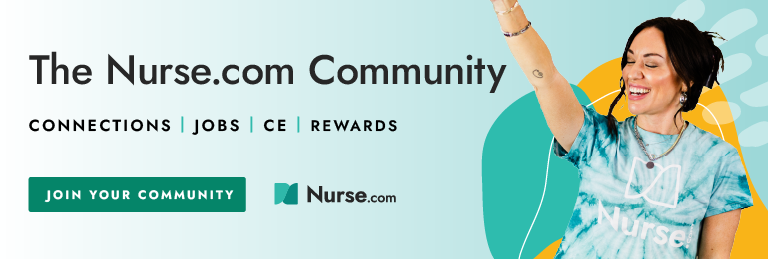As an occupational health nurse, you prevent workplace injuries, promote health and safety, and improve productivity. Staying ahead of trends is a must to meet the needs of today’s workforce.
Let’s learn about key trends shaping the future of occupational health nursing as well as explore how an occupational health nurse can adapt to these changes.
Integration of technology in occupational health
Technology is enhancing efficiency and accuracy in occupational health nursing. Here are some technology trends that will impact your role as an occupational health nurse:
Telehealth. An occupational health nurse can provide remote consultations, monitor workers’ health, and deliver health education via telehealth. Telehealth can enhance access to care, reduce absenteeism, and promote timely interventions for health issues.
Wearable technology: Fitness trackers, smartwatches, and other wearables are becoming increasingly popular in workplaces. An occupational health nurse can use data from wearables to identify health trends and tailor wellness programs. For instance, monitoring heart rates and activity levels can identify employees at risk for cardiovascular issues. An occupational health nurse can then implement early interventions for those employees.
Electronic health records (EHRs): The adoption of EHRs in occupational health nursing facilitates better record-keeping, data analysis, and communication with other healthcare professionals. An occupational health nurse can use EHRs to track employees’ health histories, monitor workplace injuries, and assess the effectiveness of health programs.
Advanced data analytics: By analyzing injury and illness data, an occupational health nurse can identify patterns and trends that may not be immediately apparent. For instance, nurses can gather data from incident reports, employee health records, and ergonomic assessments. The data may reveal that a significant number of repetitive strain injuries are occurring in a particular department, or among employees performing specific tasks. The occupational health nurse can then implement ergonomic training, or redesign workstations to reduce strain.
Emerging healthcare priorities in occupational health
Healthcare organizations are redirecting resources, and prioritizing employees’ well-being in new ways. Here are some examples that impact the role of the occupational health nurse:
A growing need for programs for mental health and well-being
There is much more awareness of the importance of mental health in the workplace. For occupational health nurses, that means a strong focus on the development and implantation of mental health programs to address stress, anxiety, and depression. Typically, programs offer counseling services, stress management workshops, and mindfulness training.
A strong focus on work-life balance initiatives
Balancing work and personal life is recognized as a significant factor in employees’ well-being. The occupational health nurse role is at the forefront of this change. An occupational health nurse can advocate for organizational policies that promote work-life balance. Many employees want flexible working hours, remote work options, and adequate vacation time, for example.
A growing need for substance use programs
Occupational health nurses are increasingly involved in developing substance use prevention and intervention programs. These programs include testing, employee assistance programs (EAPs), and educational initiatives.
Another important focus is to identify employees affected by substance use. By providing those employees with support, an occupational health nurse can prevent accidents and promote a healthier work environment.

Emphasis on preventive health and wellness
Health risk assessments (HRAs) are becoming a standard practice in occupational health nursing. HRAs involve evaluating employees’ health risks through questionnaires, physical exams, and biometric screenings.
The occupational health nurse uses the results to design targeted interventions, such as health coaching, lifestyle modification programs, and chronic disease management. HRAs can identify potential health issues early and reduce healthcare costs.
More organizations are adding comprehensive wellness programs to address employees’ physical, mental and emotional health. An occupational health nurse can offer fitness challenges, nutrition education, smoking cessation, and stress management.
Vaccination is another critical component of preventive health in the workplace. An occupational health nurse can coordinate vaccination programs to protect employees from influenza, hepatitis, or COVID-19. By promoting vaccination in the workplace, an occupational health nurse can reduce the spread of illness and minimize absenteeism.
Trends in health and safety regulations
An occupational health nurse must stay updated on changes to Occupational Safety and Health Administration (OSHA) standards. For instance, OSHA is in the early stages of developing a potential new workplace violence standard.
As companies expand globally, an occupational health nurse must become familiar with international health and safety standards. This includes understanding the regulations and requirements in different countries and ensuring that global operations comply with those standards.
Environmental health and safety (EHS) is a relatively new and growing interdisciplinary field that addresses how the workplace environment affects employees’ health. An occupational nurse can collaborate with EHS professionals to identify and mitigate environmental hazards (such as ergonomic risks, chemical exposures, or air quality issues).
Diversity, equity, and inclusion in occupational health
An occupational health nurse must be culturally competent and sensitive to the unique needs of different employee groups. Cultural competence training can help the occupational health nurse to understand culture differences, improve communication with employees, and provide equitable care.
Inclusive health programs address the diverse needs of the workforce, including gender-specific health issues, LGBTQ+ health, and accommodations for employees with disabilities. An occupational nurse can develop programs to ensure that all employees have access to the care and support they need.
Health disparities can negatively impact employee well-being and productivity. As an occupational health nurse, you can identify health disparities by analyzing health data and conducting employee surveys. Targeted interventions may include providing access to preventive care, or offering health education.
Steps to keep up with occupational health trends
Occupational health nurses can stay updated on developments in the field by taking these steps:
1. Obtaining additional certification
Professional organizations such as the American Association of Occupational Health Nurses offer certification programs that validate an occupational health nurse’s knowledge and skills. This demonstrates expertise and commitment to the field.
2. Pursuing continuing education
An occupational health nurse can attend conferences, participate in workshops, or enroll in online courses. Gaining cutting-edge knowledge on topics like regulations, legal aspects of occupational health, and data analytics in health is particularly relevant.
3. Finding mentorship and networking opportunities
An experienced occupational health nurse can mentor new nurses, providing guidance and support as they navigate their careers. For a new occupational health nurse, networking with colleagues can foster collaboration and promote best practices.
The field of occupational health nursing is evolving rapidly. As new priorities or technology emerge, staying ahead of those trends is essential to effectively meet the needs of today’s workforce.
Whether you're actively seeking a new role or assessing your next steps, explore Nurse.com's talent marketplace to help match your experience and skills to the best-fitting role.







